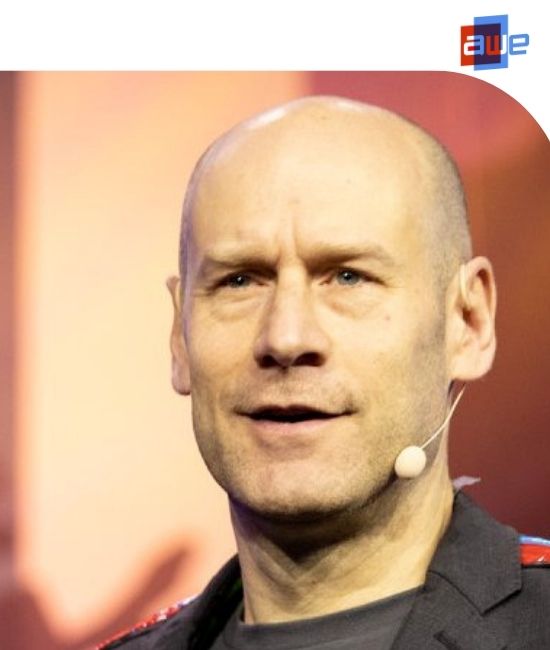15:30 - 16:00
Description
This presentation will give you hard data and lessons learned on what is and isn't working in augmented reality and virtual reality in Europe today, as well as a clear view of where the market is headed over the next five years. We'll explore the biggest opportunities for European AR/VR companies going forward, as well as how AR/VR companies are thriving in 2019.
Speakers
Related Sessions
09:00 - 09:30
Description
Ori Inbar, Co-founder and Executive Director of AWE and Super Ventures will kick off the 4th AWE EU with a special welcome address and his annual state of the industry.
For 50 years, computing has been a two-dimensional representation of a three-dimensional world.
Now, tech giants and thousands of startups who are seeking growth opportunities beyond mobile have set spatial computing on a trajectory for exponential growth. Most large corporations are adopting spatial computing to improve their businesses driven by strong evidence it delivers measurable ROI, and consumers begin to appreciate the radical benefits of this technology which could signal the next dimension of humanity. In 2019, everyone must enter the next dimension to understand the impact it’s bound to have on their lives and businesses.
Speakers

09:30 - 10:00
Description
50% of companies globally are experiencing skilled worker shortage to meet current service demands, and 70% of field service orgs face knowledge loss due to retiring workers in the next 5-10 years. Lenovo’s Commercial AR/VR Lead, Nathan Pettyjohn, will discuss the importance of creating scalable AR solutions within the workforce that improve training and worker productivity. Lenovo will showcase the ThinkReality software platform and ThinkReality A6 augmented reality headset and how it can be used within manufacturing, warehouse, energy, mining, gas and oil environments to optimize your business. Industry challenges and key solution use cases will be explored including remote expert, logistics and workflow compliance, and 3D visualization for design collaboration, all which are expected to transform workforce training and productivity. Additional topics include:
Building, managing and deploying solutions in an agnostic hardware device environment for both augmented reality and virtual reality
How long term IOT and 5G strategies should be considered within enterprise AR/VR deployments
Public Cloud, Private Cloud and On-Premise Considerations in AR and VR Enterprise Deployments
Speakers

10:00 - 10:30
Description
In this fireside chat Microsoft, Bosch and RE’FLEKT will share their vision of not only where they believe the future of AR/MR is going but how close collaboration between Hardware, Software and customer specific solutions got us there. Most importantly they will explain why companies such as these join forces to serve their collective customers as well as discussing some of the key barriers these customers are currently facing to adopt and scale AR/MR solutions such as breaking through the pilot purgatory. To top it all off – Microsoft’s, Michael Zawrel with showcase a live demo of one of these best-in-class Enterprise AR Solutions on the HoloLens 2.
Speakers



10:30 - 11:00
Description
PLM systems such as Siemens Teamcenter are the beating heart of most industrial powerhouses in their ability to serve all aspects of the value chain from design to production. Why should this be any different for AR? For the first time RE’FLEKT and Siemens will present together how the Siemens PLM structure can now be used to make AR content at any stage of the PLM information flow. We will show how AR connects to existing enterprise systems and how it works – naturally with a special inside look at Siemens Teamcenter. Together we will also give exclusive insights to what is next for Siemens users as well as what else to expect from the growing RE’FLEKT Enterprise OS.
Speakers


11:00 - 11:30
Description
Effectively deploying digital continuity solutions such as AR-guided operator solutions require the right combination of applications highly adapted to specific needs and constraints, of hardware implementation (projection, head-mounted displays like the HoloLens, tablets, mobiles, desktop workstation, IoS, Android, Windows…) and of data use and exploitation (PLM and CAD data, field data…). Besides, effectively deploying digital continuity solutions with an optimal ROI more and more assumes the right combination of various technologies into integrated solutions (simulation, IoT, robotics, AR/MR, AI…). Last but not least, effectively deploying digital continuity solutions always requires that players from various profiles (industrial companies, integrators, engineering consultants…) may effectively collaborate for industry-fitted solutions. In this presentation, Diota will share its experience in deploying real use cases taking into account all these key points and will explain how to effectively success.
Speakers
